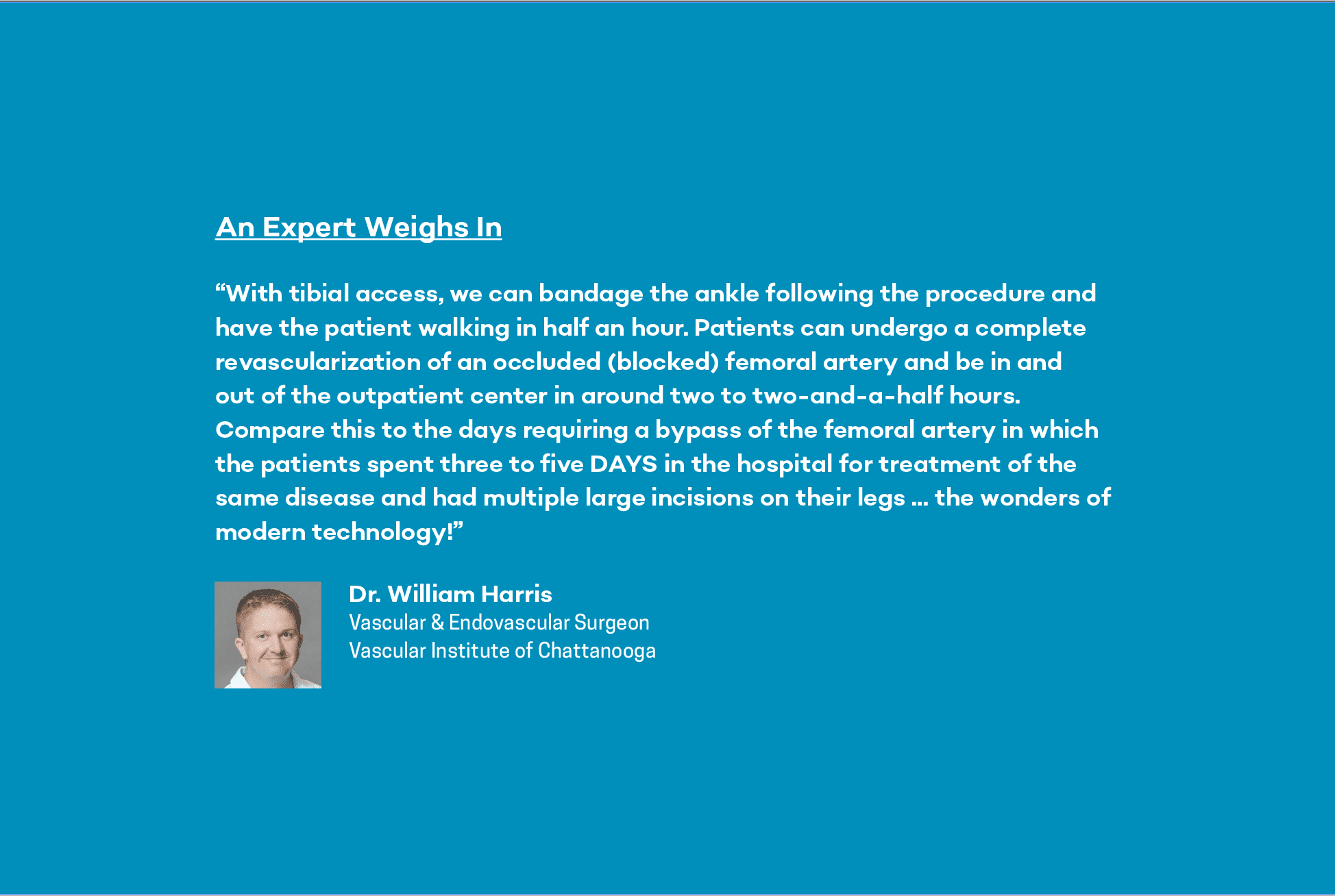Advancements in Medicine Section
Understanding Peripheral Artery Disease
If you’ve experienced pain, loss of sensation, weakness, or cramping in your lower extremities after an activity, you may have peripheral artery disease (PAD), which affects an estimated 20 million Americans. Caused by atherosclerosis, or fatty buildup (plaque), in the blood vessels and arteries that affect the arms, legs, and other parts of the body, PAD can lead to dangerous consequences like non-healing sores on the legs or feet.
When plaques form, they narrow the artery walls, making it difficult for the legs or other extremities to get adequate blood flow. If not properly treated, advanced PAD can require limb amputation.
New Treatment Options
Thanks to advancements in endovascular therapy (minimally invasive procedures used to treat problems affecting the blood vessels), treating PAD is easier now than ever. Using a long, thin tube known as a catheter, endovascular surgeons can diagnose and treat blockages in the tibial arteries (below the knee) by entering through the ankle. This process is known as a “tibial-pedal-first” approach.
Previously, catheterization to treat PAD was initiated through the femoral artery, or groin. From there, the physician would guide the catheter to the diseased artery for treatment using a variety of methods. Treatment through the femoral artery requires more recovery time, has a more serious bleeding risk, and is not appropriate for every patient, particularly those who are morbidly obese or who are unable to lie flat.
What to Expect from the “Tibial-Pedal-First” Procedure
During the approximately hour-long outpatient procedure, your physician will insert a catheter through a small incision in your foot. Using ultrasound guidance, he or she will thread the catheter through your tibial artery until the blockage is reached. Then, depending on the case, your physician will use balloon angioplasty, atherectomy, or stenting to repair the damaged vessel. Recovery is quick, and patients can return to activities the same day, often walking home.
Benefits to Patients
Not only is recovery from the new procedure much faster than with femoral catheterization, but it has expanded treatment options for those suffering from PAD. Treating blockages by threading a catheter through the ankle allows for more direct access to blockages, is far less invasive, and can significantly improve blood flow and save limbs that were once considered at risk for leg amputation.



